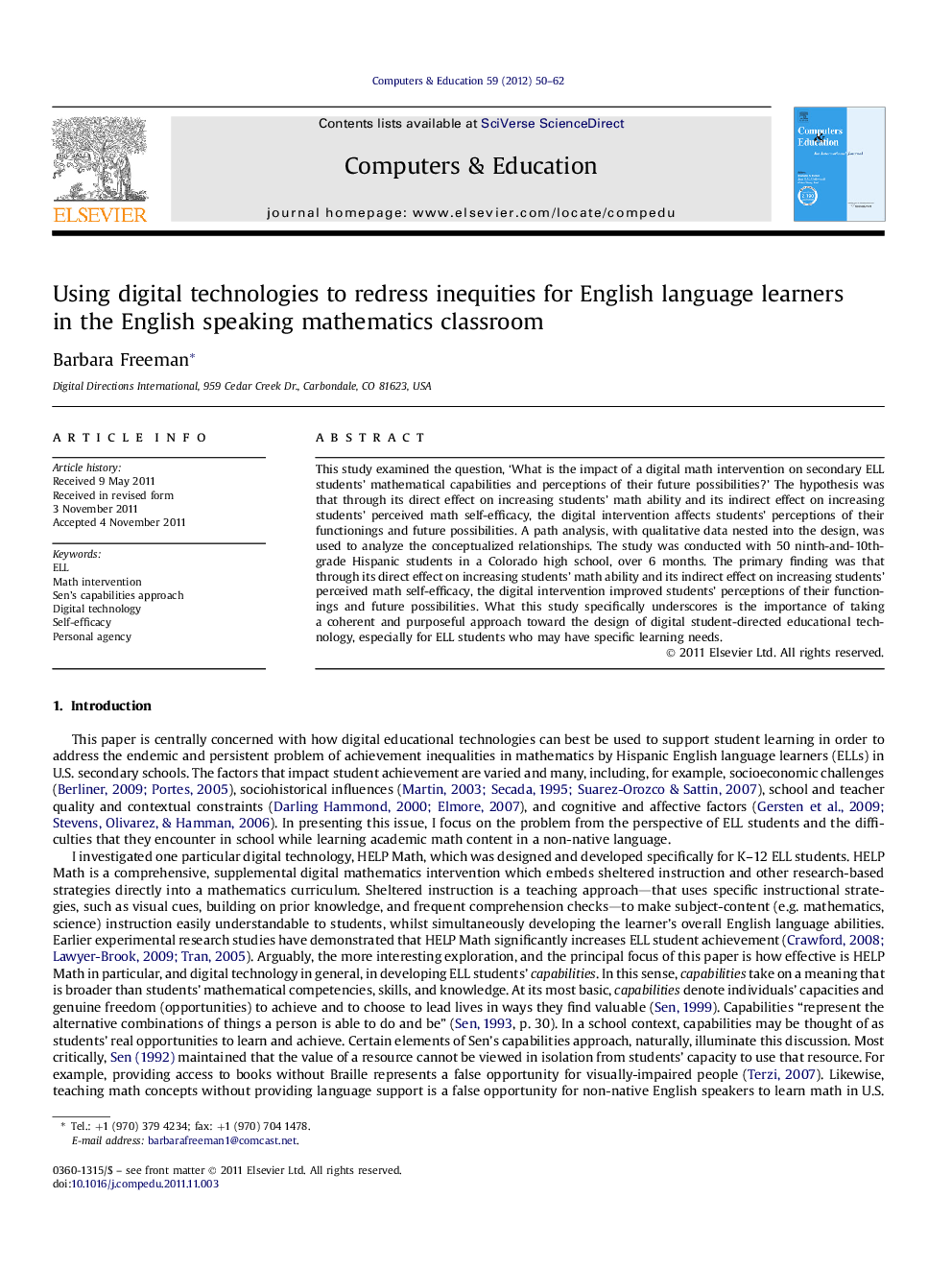| کد مقاله | کد نشریه | سال انتشار | مقاله انگلیسی | نسخه تمام متن |
|---|---|---|---|---|
| 348869 | 618205 | 2012 | 13 صفحه PDF | دانلود رایگان |

This study examined the question, ‘What is the impact of a digital math intervention on secondary ELL students’ mathematical capabilities and perceptions of their future possibilities?’ The hypothesis was that through its direct effect on increasing students’ math ability and its indirect effect on increasing students’ perceived math self-efficacy, the digital intervention affects students’ perceptions of their functionings and future possibilities. A path analysis, with qualitative data nested into the design, was used to analyze the conceptualized relationships. The study was conducted with 50 ninth-and-10th-grade Hispanic students in a Colorado high school, over 6 months. The primary finding was that through its direct effect on increasing students’ math ability and its indirect effect on increasing students’ perceived math self-efficacy, the digital intervention improved students’ perceptions of their functionings and future possibilities. What this study specifically underscores is the importance of taking a coherent and purposeful approach toward the design of digital student-directed educational technology, especially for ELL students who may have specific learning needs.
► HELP Math improved ELLs’ math ability, self-efficacy and self-perceptions.
► Math ability and self-efficacy intertwine to develop students’ capabilities.
► Translations, e-tools, and scaffolding enabled ELLs to take control of learning.
► Outcomes improve when digital tool design addresses ELLs’ specific learning needs.
► Interaction among content, pedagogy, and technology supports ELL learning.
Journal: Computers & Education - Volume 59, Issue 1, August 2012, Pages 50–62